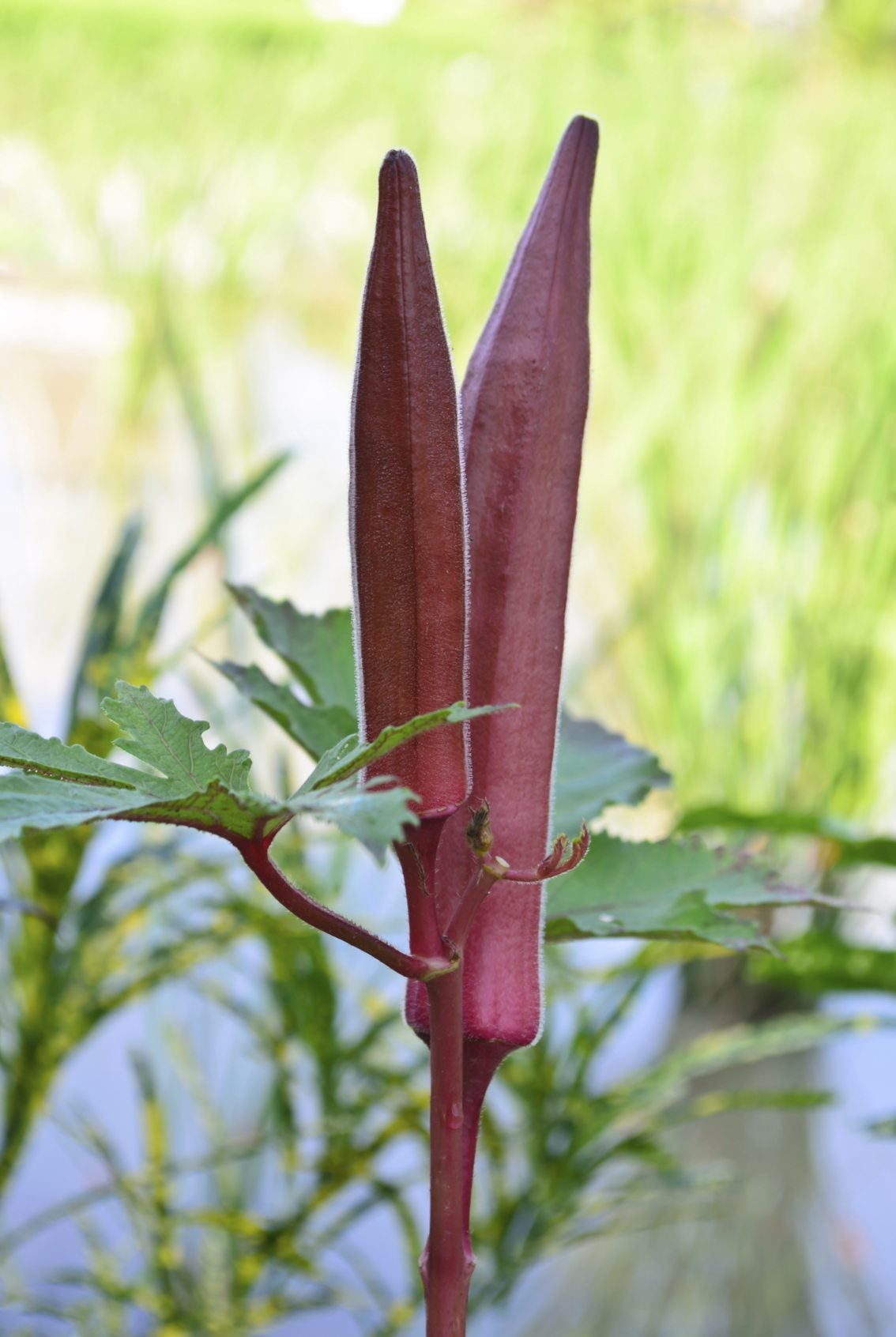Red Burgundy Okra: Growing Red Okra Plants In The Garden

You probably either love okra or hate it, but either way, red burgundy okra makes a lovely, showy specimen plant in the garden. You thought okra was green? What kind of okra is red? As the name suggests, the plant bears 2 to 5 inch (5-13 cm.) long, torpedo-shaped fruit, but is the red okra edible? Read on to find out all about growing red okra plants.
What Kind of Okra is Red?
Native to Ethiopia, okra is the only member of the mallow family (which includes cotton, hibiscus, and hollyhock) to bear edible fruit. Generally speaking, okra pods are green and a staple of many a southern diet. A relative newcomer, Red Burgundy okra was bred by Leon Robbins at Clemson University and introduced in 1983, becoming the All-America Selections winner in 1988. There are also other red varieties of okra that include ‘Red Velvet’ and the dwarf red okra “Little Lucy.” So, back to the question “is red okra edible?” Yes. In fact, there really isn’t much difference between red okra and green okra other than the color. When red okra is cooked, alas, it loses its red hue, and the pods turn green.
Growing Red Okra Plants
Start plants inside four to six weeks before the last frost date for your area or directly outside two to four weeks after the last expected frost. Okra seeds can be hard to get to germinate. To facilitate the process, either gently crack the outer coating with nail clippers or soak them in water overnight. Germination should take place in 2 to 12 days. Space seeds 2 inches (5 cm.) apart in rich soil, and about ½ inch (2 cm.) deep. Be sure to amend the soil with plenty of compost since okra is a heavy feeder. Transplant the seedlings when all chance of frost is gone and the soil is warm, and the ambient temps are at least 68 degrees F. (20 C.). Plant the new plants 6 to 8 inches (15-20 cm.) apart. Pods should form in 55 to 60 days.
Sign up for the Gardening Know How newsletter today and receive a free copy of our e-book "How to Grow Delicious Tomatoes".

Amy Grant has been gardening for 30 years and writing for 15. A professional chef and caterer, Amy's area of expertise is culinary gardening.
